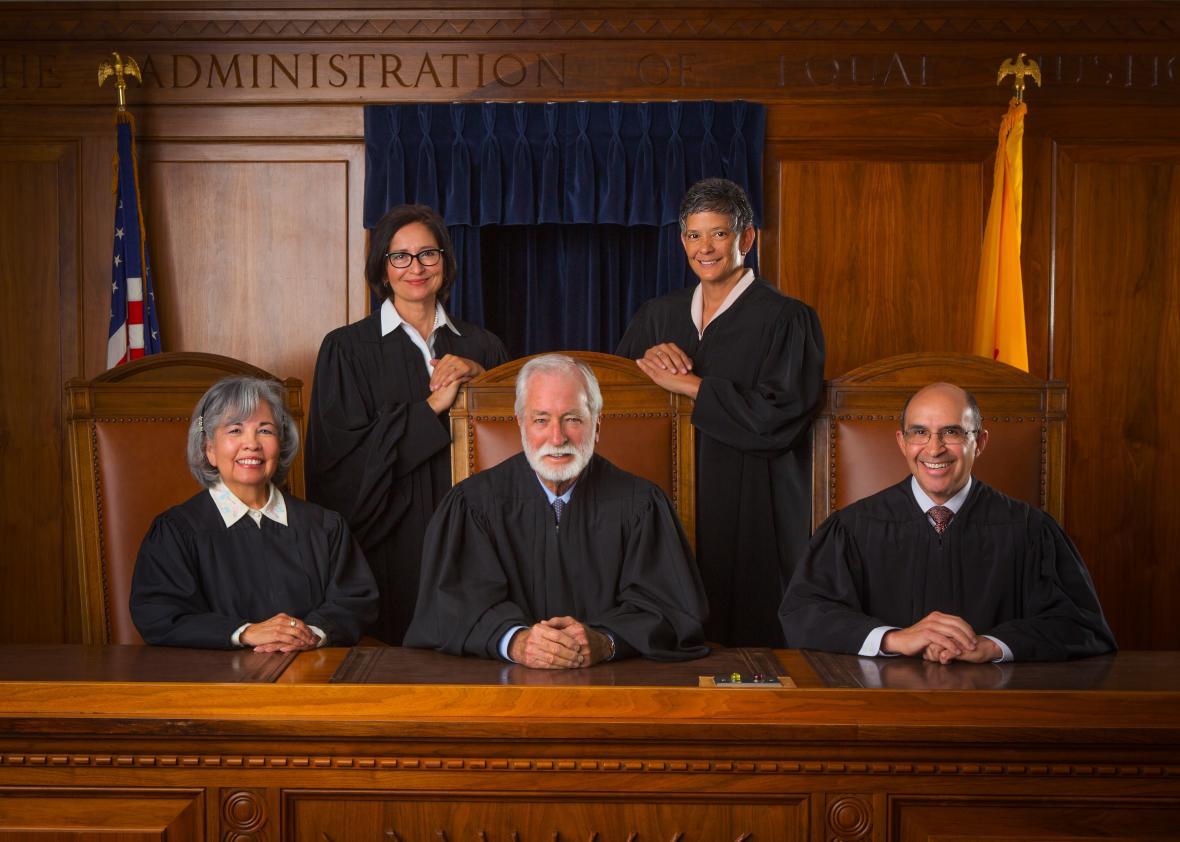Guadalupe Ashford’s body was found behind a trashcan at the edge of a parking lot. She had been bludgeoned to death by a brick, and state forensic analysts collected DNA samples from her body and the murder weapon. This DNA matched that of Truett Thomas, whom the state tried and convicted for first-degree murder and kidnapping. One problem: The forensic analyst who matched the DNA samples had moved out of state, and she was constitutionally required to testify at Thomas’ trial. The analyst didn’t want to schlep back to New Mexico, so the court allowed her to testify via Skype. What a handy solution!
Except it is also a blatantly unconstitutional one, as the New Mexico Supreme Court unanimously ruled on appeal. The problem is the Confrontation Clause of the Sixth Amendment (and its exact analogue in the New Mexico state Constitution), which states: “In all criminal prosecutions, the accused shall enjoy the right … to be confronted with the witnesses against him.” (Laboratory technicians and forensic analysts are considered “witnesses” for Confrontation Clause purposes.) Courtroom confrontation of witnesses was an obsession for the framers of the Bill of Rights: The practice was well-established in English common law, but the British rulers of the pre-revolutionary colonies often jettisoned confrontation rights to punish unruly colonists. So once these colonists broke free from the crown and penned their own charter of liberties, the right to confrontation was restored as an integral component of the criminal justice system.
The Supreme Court has repeatedly recognized that the Confrontation Clause strongly favors physical, in-person, face-to-face confrontation. However, the court relaxed this preference in 1990’s Maryland v. Craig, to let minors who allege sexual abuse to testify via a closed-circuit, one-way television procedure. This 5-4 decision came down at the height of America’s child abuse panic, when prosecutors sent thousands of innocent people to prison because children falsely accused them of molestation. Courts played a role in this travesty of justice by relaxing constitutional due process to spare children emotional trauma. Craig is perhaps the most egregious example of the special rules courts crafted for purported child victims. As Justice Antonin Scalia noted in dissent, the faux-confrontation procedure “gives the defendant virtually everything the Confrontation Clause guarantees (everything, that is, except confrontation).”
Craig is now widely viewed as a mistake—and indeed, its reasoning has been seriously undermined by more recent Supreme Court decisions. Still, the New Mexico Supreme Court may have understandably been tempted to sign off on a Craig-like replacement for actual confrontation. The justices deserve credit for resisting this urge. “A criminal defendant may not be denied a physical, face-to-face confrontation with a witness who testifies at trial unless the court has made a factual finding of necessity to further an important public policy,” the court explained. “Nothing in the record of this case demonstrates that the use of two-way video was necessary to further an important public policy as required by Craig.” Thus, “the admission of remote testimony violated Defendant’s right to confrontation.”
“Inconvenience to the witness,” the court concluded, “is not sufficient reason to dispense with this constitutional right.”
That’s exactly right—and it’s a vital precedent in light of Craig’s squishy standard. To quote Scalia again, the purpose of the Confrontation Clause “is ordinarily to compel accusers to make their accusations in the defendant’s presence—which is not equivalent to making them in a room that contains a television set beaming electrons that portray the defendant’s image.” Just because a procedure feels like confrontation doesn’t make it confrontation. Or, as Scalia put it: “Virtual confrontation might be sufficient to protect virtual constitutional rights; I doubt whether it is sufficient to protect real ones.”
New Mexico’s entire case against Thomas hinges on the forensic analyst’s DNA match. Her testimony—explaining how she examined the evidence, conducted a DNA search, and maintained the chain of custody—was, in one sense, the centerpiece of Thomas’ trial. Without her work linking Thomas’ DNA to the murder scene, he may never even have been a suspect. Whether the analyst’s physical presence in the courtroom would have changed the dynamic of cross-examination or revealed greater truths to the jury is irrelevant. The Constitution is clear as can be on the right of defendants to confront witnesses against them. And the New Mexico Supreme Court was correct to conclude that courts can’t use Skype to wriggle around the Sixth Amendment.
